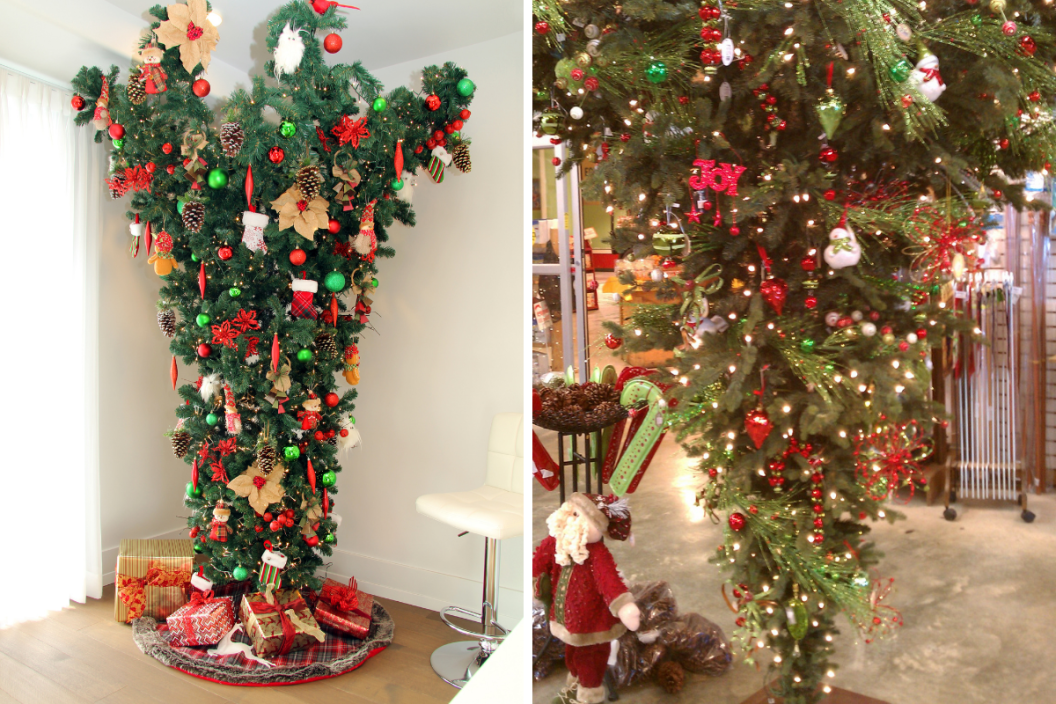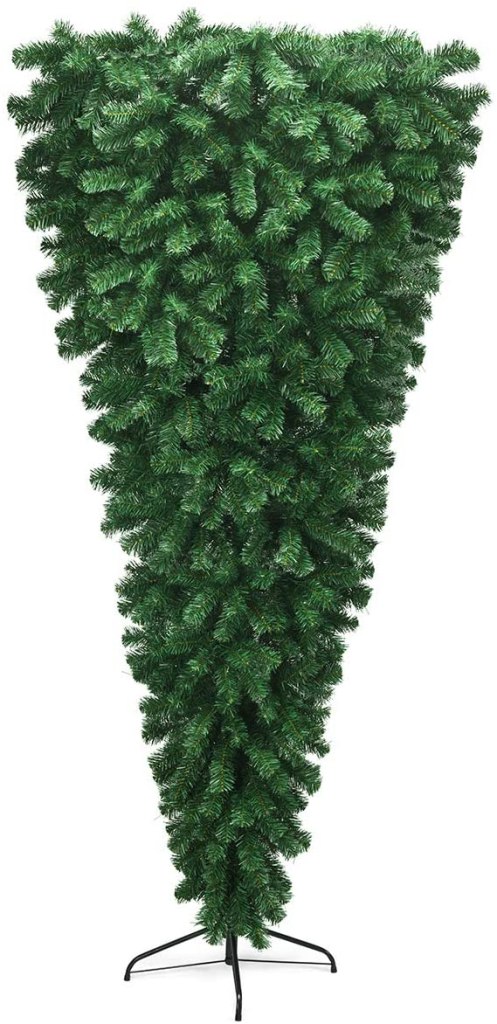To be honest with you, I'm not really sure what's going on. First of all, there is such a thing as upside-down Christmas trees. Okay, I guess I can live with that. Confused, but acceptable. While I'm digesting that little nugget of information, I stumble upon the next one about these topsy-turvy trees: they're selling for $1,000. Wait, what?
Videos by Wide Open Country
Christmas is all about holiday traditions. Going to the Christmas tree lot (or, cutting down your own tree, if that's your thing). The ceremony of placing the Christmas decorations and ornaments while lighting the tree for the first time. The pile of gifts grows larger as the big day approaches. All those Christmas cookies you enjoy sitting by its side.
All taking place under a traditional, right-side-up Christmas tree. So who would think to buy an upside-down Christmas tree in a triangular shape? Is this an old tradition we're missing?
https://twitter.com/BuckleySilver/status/1457788168246206464
Apparently, lots of people. Department stores around the country are flipping tradition on its head, and consumers are buying these upside-down artificial trees. Upside-down Christmas trees are for sale at all the big outlets: Walmart, Home Depot, Kohls, Target, even Bed Bath & Beyond. Some stores are reporting they're sold out! While most are in the $150 range, some are listed for as much as $1,000. I'm not sure what could possibly make them so expensive, except that this fad is big.
Hotels around the country, including Hotel Del Coronado in California and the high-end Claridge's in London, are showcasing upside-down Christmas trees, especially the spruce variety for their holiday décor. Malls like the Westfield San Francisco Centre are doing the same. Between the department stores, malls, and hotels this has become the hottest holiday trend this year. Which brings us to an all-important question: where did this trend start? How did it stray from traditional Christmas trees?
Apparently, this is nothing new.
@KissFMUK hey guys!
This is my upside down Christmas tree
10 years old this year! pic.twitter.com/uCqy4TbI0O— Terri (@SweetT_Terri) November 28, 2017
While some blame Stranger Things for introducing the "Upside Down" world, others say that upside-down Christmas trees aren't a new trend. Back in 2005, NPR reported that retailers have been using this trick for years to showcase ornaments. They claim it makes the tree dressings more "eye-catching" and creates better sales.
The symbol goes as far back as the 7th century when a Benedictine monk named Boniface decided to teach a group of pagans a lesson. When he spotted them worshipping an oak tree, Boniface cut down the tree and a fir tree grew in its place. He then cut down the fir and hung it upside down, using the inverted tree to represent the holy trinity.
However, some historians argue that the trend started out in 12th century Eastern Europe. In Poland, Polish families would suspend trees in their living room and decorate the hanging trees with ribbons, dried fruit, pine cones, and sweets. The upside-down Christmas trees were a homage to Christianity.
Then in the 19th-century families started hanging trees during the holiday season to free up floor space according to Bernd Brunner, author of Inventing the Christmas Tree.
Traditional or Disrespectful?
Display upside down Christmas tree ?2021 pic.twitter.com/QV7u7fgoyI
— Susan Davis (@SusanDa12262793) November 15, 2021
Many find the upside-down Christmas tree trend to be disrespectful, but when you consider its religious roots, it might not be so incorrect, after all. How do you feel about this tradition? Let us know in the comments!
I think I'll stick to the traditional Upside Down Apple Cake, thank you very much! Or, better yet, this Texas Grapefruit Upside Down Cake!
Editors Note: This article was originally published on December 14, 2020.






